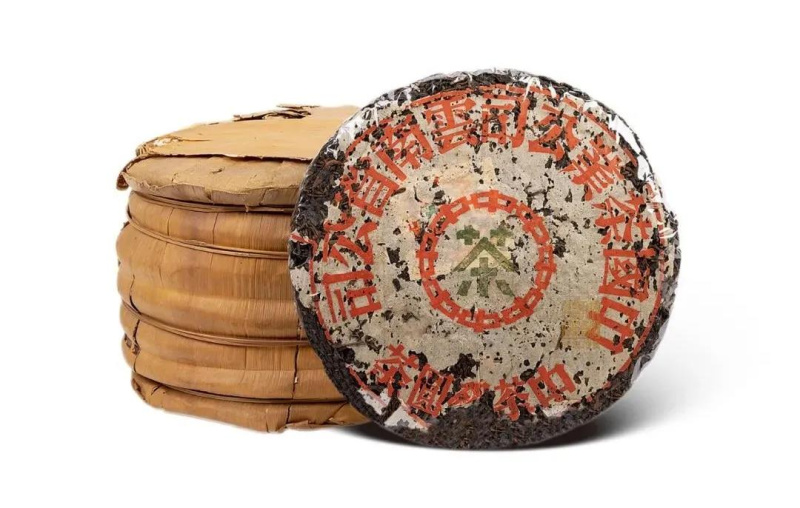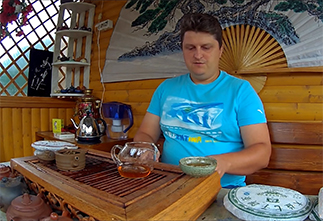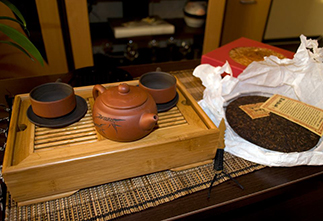"Chang'e" or "Chang E" (嫦娥, cháng'é) is a character in Chinese mythology, the goddess of the moon, and the holiday "Zhong qiu jie" (中秋节, zhōngqiūjié, "Mid-Autumn Festival") is dedicated to her. During the Mid-Autumn Festival (usually held in September or October), it is customary to give mooncakes and admire the full moon. Long ago, when there were ten suns in the sky, life on Earth became almost unbearable due to incredible heat and drought. Hou Yi (后羿, hòuyì), a great archer, decided to help people and began shooting at the suns one by one, until only one remained, the one we see today. For his exploits, he was given the elixir of immortality. However, his wife Chang'e stole the elixir, drank it and flew to the moon, where she became the moon goddess.
Chang'e has also been China's space program since 2004. China's first lunar module, Chang'e Yihao, was launched to the Moon in 2007, and Chang'e-1 crashed on the Moon in 2009. China's second unmanned interplanetary station, Chang'e Erhao (Chang'e-2), was launched in 2010, and Chang'e Sanhao (Chang'e-3), launched in 2013, made a soft landing on the Moon. Chang'e-4 made the first known landing on the far side of the Moon in 2018, and Chang'e-5 returned lunar soil to Earth in 2020.
Shu puer "Chang e benyue" ("Chang'e benyue", 嫦娥奔月, cháng'é bēnyuè, "Chang'e flies to the moon") of the Liming factory (黎明, límíng "Dawn") of the Bajiaoting brand (八角亭, bājiǎotíng, "Pagoda") has a medium-density pressing of beautiful, even brown-black and golden-red leaves, a rich and dense aroma, a pleasant sweetish puer taste.
The cake has a homogeneous raw material with a large number of tea buds and has a calm, mature aroma, in which shades of old wood, dry last year's leaves, camphor and nuts in a bag can be guessed. After washing, pu-erh opens up with the smell of old wood scalded with boiling water, notes of coniferous wood and roasted nuts.
The taste of brewed tea is sweetish, soft, but subtle, with nuances of homemade cookies, dried herbs and young walnuts. By the 5th steeping, a trail of dark chocolate with a slight pleasant bitterness dominates the taste. The tea withstands 6 full steepings, leaving a dense, long-lasting aftertaste, pleasantly drying the mouth, with hints of cookies and sparkles of fresh walnuts.
The recommended utensils for brewing this pu-erh are a teapot made of porous Yixing clay or a porcelain gaiwan with thick walls.
The color of the finished infusion is dark brown with an amber tint.
At the very beginning of tea drinking, a strong and long-lasting tea effect is felt. Puer relaxes well, harmonizes, lifts the mood and promotes communication. It sharpens the work of the senses, warms the whole body, brings harmony and calm, strongly tones and encourages action.
Shu puer 2007 "Chang'e flies to the Moon" brand "Pagoda" factory "Liming", aged tea, top quality, with a bright taste and powerful tea state. Suitable for ceremonial tea drinking, for lovers of puer with a real tea effect.
|
Name in Chinese
|
嫦娥奔月 |
|
Pinyin
|
change of scenery |
|
English name
|
Shu Puer 2007 "Chang'e Flies to the Moon" brand "Pagoda" factory "Liming" |
|
Translation
|
Chang'e flies to the moon |
|
Country
|
China |
|
District
|
Xishuangbanna Dai Autonomous Prefecture |
|
Provinces
|
Yunnan (云南) |
|
Region
|
Menghai (勐海) |
|
Manufacturer
|
Лимин (黎明) |
|
Raw material production date
|
2007 |
|
Year of pressing
|
2007 |
|
Pressing form
|
Bing Cha (Cake Tea) |
|
Declared weight, g
|
357 |
|
Tea tree (bush) variety
|
Da Ye Zhong |
|
Length, cm
|
19 |
|
Width, cm
|
19 |
- Комментарии
- Вконтакте
Pu-erh is one of the most unique types of tea, which only gets better with age. Many people, when they first encounter this tea, wondered: why is pu-erh more often found in pressed form (cakes, bricks, tochas), and not in loose form? The reasons for this are related to both history and the practical aspects of storing and fermenting tea. Despite modern technologies that allow the production of loose pu-erh, the shape of pressed cakes remains unchanged. And pu-erh is more often found on sale in pressed form, for example, in the form of cakes or bricks, and loose pu-erh is less common. We will talk about the reasons for pressing pu-erh into cakes in this article.
Puer is a unique Chinese tea that is distinguished by its depth of taste, complexity of aromas and versatility of aftertaste. Its taste characteristics are formed under the influence of many factors, from growing conditions to the brewing method. Let's look at the main ones.
The question often arises: how to brew puerh correctly? Sometimes the phrase "to get high" is added to it. Moreover, everyone has their own understanding of this phrase. Some mean vigor, and some - intoxication. So how to brew puerh tea correctly? Let's consider several options.
Traveling through the tea mountains, we found ourselves in another land of blue roofs - the village of Zhongcai, which is located in the Menghai district of Yunnan province. According to tradition, we were shown another local tea tree, which, according to the Chinese, is at least a million years old :) The village is very authentic, not designed for tourists, there are many wild pu-erhs there and, of course, we were warmly received. They treated us to local cuisine and tea. We also asked the residents about the prices of tea and how they have changed in recent years.
The tea ceremony occupies a special place in the centuries-old Eastern tradition. And although the essence of this phenomenon remains constant, the nature and external manifestations of the tea ceremony in different nations have their own national characteristics. In each Chinese province, the tea ceremony and the tea used in it are varied: for example, residents of the southern provinces prefer green tea, and residents of the northern provinces - red tea, in Fujian province they more often use Oolong tea, and in Yunnan province Puer tea is widely known.
































































































